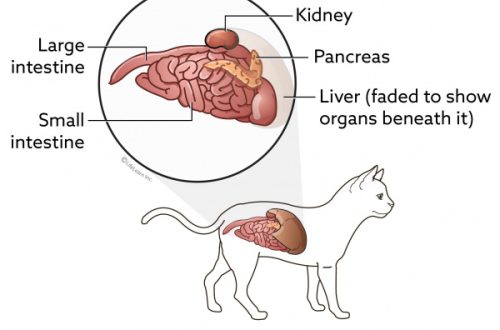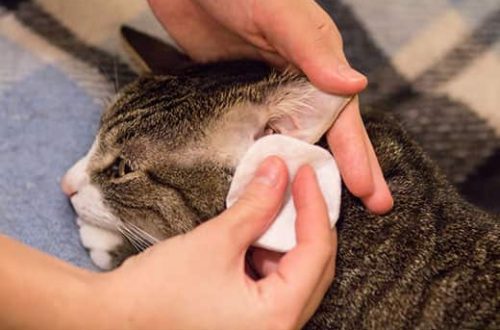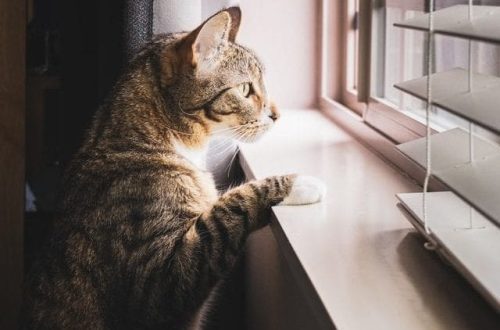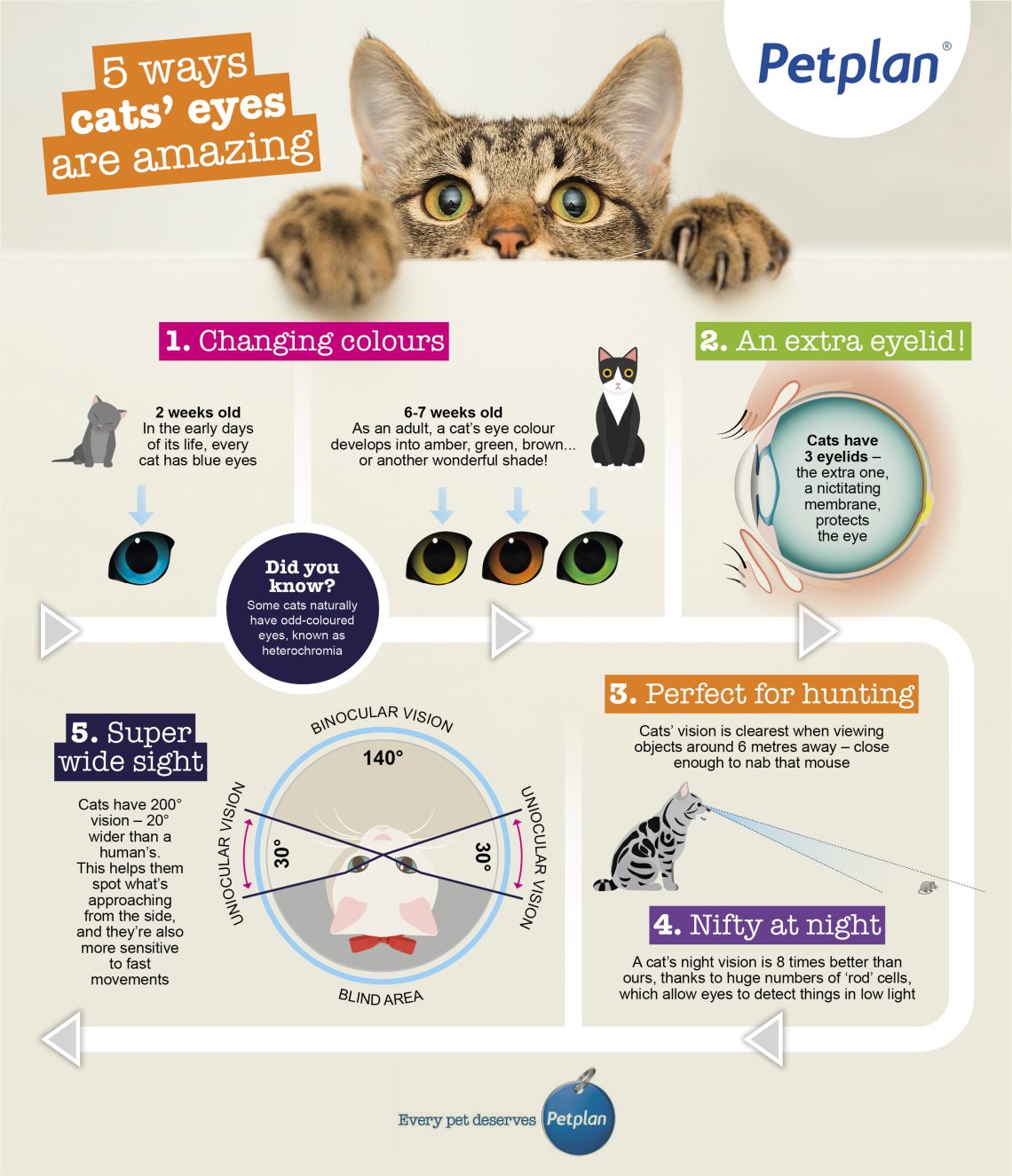
Eye diseases in cats: 6 most common problems
If your fluffy pet blinks or rubs its eyes often, you may suspect an allergy or something else serious. Keeping your cat’s eyes healthy is an important factor in their overall health, and recognizing problems can help prevent serious complications. What are eye diseases in cats and what to do if a cat has an eyeache?
Although cats are not as prone to developing eye problems as dogs, they tend to develop chronic eye problems, according to Animal Eye Care. There are six of the most common eye diseases in cats that an owner may encounter.
Contents
1. Conjunctivitis
Conjunctivitis, also known as pink eye, occurs when the mucous membrane that covers both the outside and inside of the eyeball becomes inflamed. Like pink eye in humans, this disease is highly contagious, although the feline variety can only be transmitted to cats.
Reasons. Conjunctivitis usually results from an upper respiratory disease caused by a virus or bacterial infection.
Signs and symptoms. This is an eye disease that causes watery eyes in cats. Eye discharge can be clear or gray, yellow, green, or even dark, rusty red. The inside of the eye may swell or become red. One or both eyes may be affected. There are other signs of upper respiratory disease, including sneezing and nasal discharge.
Treatment. Typically, conjunctivitis is treated with topical antibiotic drops or ointment. In case of upper respiratory tract disease, treatment will be directed to him. One type of infection that often leads to this eye disease is FHV-1, or feline herpes virus. If this is the cause, your veterinarian may prescribe further treatment.
2. Secondary eye infections
Conjunctivitis is not the only eye infection a cat can develop. Other infectious eye diseases in cats are quite common. They are often the result of upper respiratory infections that spread to the eyes. The contagiousness of an eye infection depends on its underlying cause.
Reasons. Infections can be caused by a number of pathogens, including bacteria, viral infections, fungi, and parasites.
Signs and symptoms. If a cat rubs its eyes and squints, these are common signs of an eye infection. Other symptoms include redness and swelling of the eyes, discharge from the eyes, and sneezing and runny nose.
Treatment. Typically, a veterinarian will treat the underlying infection that is causing eye discomfort. For mild infections, priority is given to treating symptoms, rest, flushing the eyes of discharge, and eating a healthy diet. The animal also needs to consume plenty of fluids. Severe infections can be treated with ointments or eye drops, as well as general antibiotics.
3. Irritation
Although cats do not usually suffer from allergies that cause itchy eyes and watery eyes, environmental irritants can cause a similar effect. They will provoke eye diseases in cats, inflammation and discomfort.
Reasons. Strong odors, such as perfumes, detergents, tobacco smoke and dust, can become eye irritants for cats. Almost anything that gets into a cat’s eyes can trigger an irritant reaction.
Signs and symptoms. You can suspect eye problems in cats if they squint or rub their eyes. This can also be indicated by redness of the eyes and discharge.
Treatment. If the cat’s symptoms are definitely caused by irritation, you can rinse her eyes with a special solution. Additionally, you need to get rid of the irritant in the house, if it is known exactly what it is that causes discomfort. But signs of irritation are also similar to diseases. If your cat’s eyes hurt, watery, it is better to consult a veterinarian to rule out more serious problems.
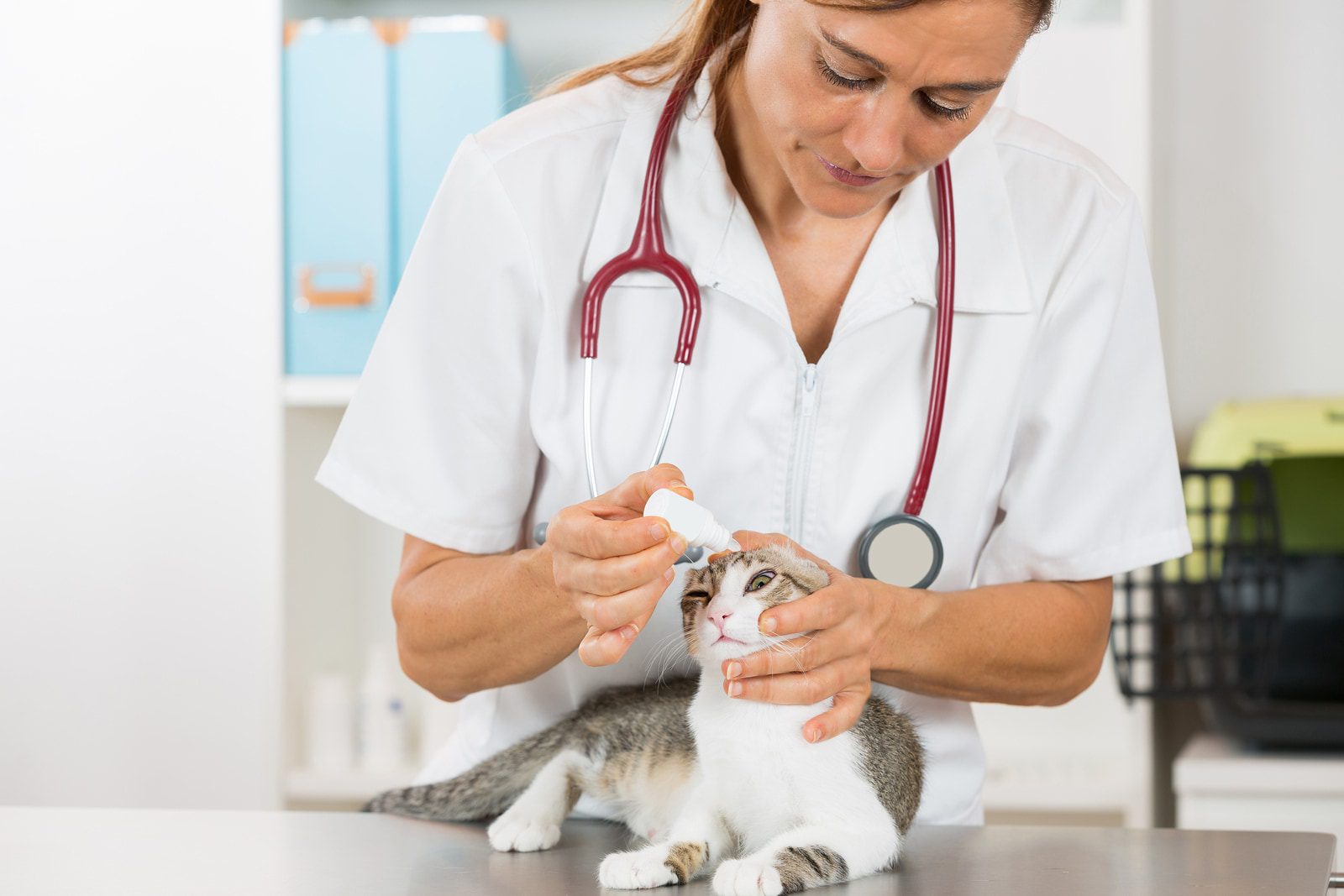
4. Corneal ulcers
A potentially serious condition, corneal ulcers are open sores on the surface of the eye that can cause blurred vision in the affected area.
Reasons. This disease can occur as a result of trauma, chronic dry eyes or anatomical disorders. They can also be caused by untreated eye infections.
Signs and symptoms. In addition to cloudiness in the affected area, signs of corneal ulcers include rubbing and squinting, obvious eye pain, redness, and discharge.
Treatment. Mild ulcers usually heal after the underlying cause is removed. Additionally, the veterinarian may prescribe antibiotic ointment or drops, as well as painkillers. Ulcers that penetrate deep into the eye may require surgery. With proper treatment, corneal ulcers usually heal, but if left untreated, they can lead to complete blindness.
5. Glaucoma
This disease occurs due to pressure in the eye caused by the accumulation of excess fluid. Glaucoma is a serious condition that should be treated as quickly as possible to prevent total blindness.
Reasons. Various factors can prevent the outflow of eye fluid that causes glaucoma. These include anatomical abnormalities, eye infections, inflammation, eye injuries, and tumors. Some cats have a genetic predisposition to glaucoma, in which case it is not uncommon for both eyes to be affected.
Signs and symptoms. Cats with glaucoma usually show signs of severe pain, which can be accompanied by eye rubbing and squinting, withdrawing from people, and howling or crying. The eyes become cloudy, watery, or reddened. In severe cases, the eyeball itself may appear swollen.
Treatment. If the owner suspects that the cat is developing glaucoma, a veterinarian should be contacted immediately. The sooner you manage to reduce the increased eye pressure, the more likely it is to save your eyesight and eyes. In mild cases, glaucoma resolves once the underlying cause is removed, but in more severe cases, ongoing treatment may be required to prevent excessive fluid buildup. In the worst case, the eye may need to be removed.
6. Cataract
A cataract is a cloudy area that develops on the lens of the eye, preventing light from reaching the back of the eye. This leads to loss of vision, and in some cases to total blindness.
Reasons. Although cataracts may simply be the result of aging, they can also be caused by diabetes or inflammation of the choroid. Cataracts can result from electric shock or exposure to radiation or toxic substances. It can also be a sign of calcium deficiency.
Signs and symptoms. A cataract gives the eye a cloudy, cloudy appearance. However, it is usually not visible until it has developed to the point of significantly impairing vision. In this case, the cat may show signs of loss of vision – collision with objects or slow movement, especially in low light. If the cataract is caused by diabetes, the cat may lose weight, become very thirsty, and urinate frequently.
Treatment. It is necessary to consult a veterinarian to rule out age-related eye diseases in cats. If found, they will need to be treated separately. As for the cataract itself, one of the treatment options is surgery. But cats adapt well to vision loss if they live indoors and out of dangerous situations.
Maintaining Eye Health in Cats
If the cat’s eyes hurt, watery and fester, you should seek the advice of a veterinarian. Since various diseases have too many symptoms, it is impossible to correctly diagnose vision problems without an examination. Waiting for the disease to go away on its own is a waste of time. It can be critical to saving a cat’s eyesight if the disease turns out to be serious.
Whether or not your cat is showing any signs of eye problems, keeping her eyes healthy will help prevent such problems from developing.
Feeding a cat a meat-based diet, keeping it vaccinated on time, keeping it indoors, and limiting contact with other animals that can be contagious will make a significant contribution to protecting a cat’s eyes, not to mention overall health and quality of life.
See also:
Why do cats have watery eyes?
Features of the vision of cats and how they see the world around them
Conjunctivitis in cats
Glaucoma in cats



